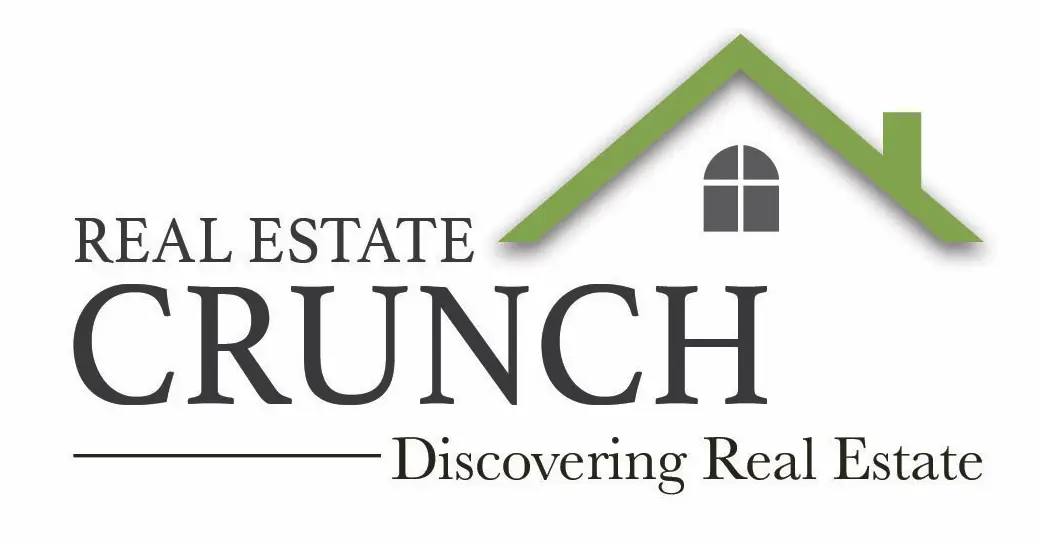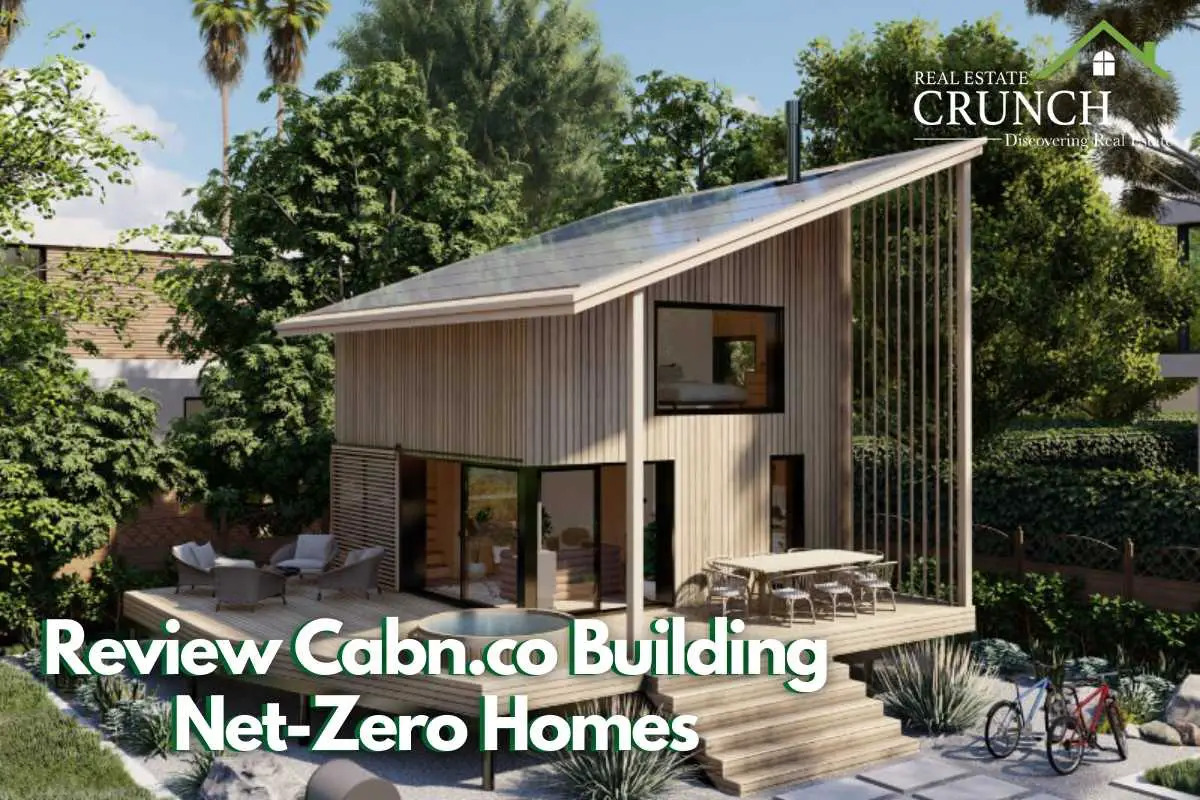I enjoy learning about new companies that offer great home designs and looking at ways to save the environment. One of these new companies is called Cabn.co
We love the design for the Cabn.co homes and how at the same time, they are using all the benefits of Net-Zero and intelligent technology. We also love that these two-story homes seem to have plenty of indoor and outdoor space. These homes could be in many great locations, either for a vacation home or full-time residence.
Table of Contents
- Cabn.co Building Sustainable Home
- Cabn.co Efficiency Smart Homes To Live Anywhere
- Cabn.co House Models
- Frequently Asked Questions
- Related Questions
Cabn.co Building Sustainable Home
CABN is a new net zero company building prefabricated homes. I love some of the modern designs of their homes. Cabn.co has said that one of its focuses is on bringing sustainable yet cost-effective homes to consumers and different worldwide communities.
The CABN website has not told us exactly how much their homes cost, but their homes do have a very nice look and design.
CABN does seem to have an excellent team looking at ways to make the sustainable lifestyle a reality. On their website, they said this about their homes:
“CABN uses an innovative manufacturing process to create net-zero, cost-efficient, component modular housing with a fully integrated heating, cooling and solar energy system. Built on a steel frame foundation, CABN features sustainable cladding options and R-40 insulation, finished with high-performance windows and doors.”
Cabn.co
Cabn.co Efficiency Smart Homes To Live Anywhere
CABN builds homes that can be off the grid; they say they are making a smart home that can be located anywhere.
Here are a couple of things that I love about their home designs:
- More Extensive Roof – I love how the home designs have one roof that is longer than the other. That more extensive roof also is filled with solar panels. I appreciate this as I know this would be a roof where you could point south to get the most sun possible from the solar panels. This is an excellent ingenious design for a home that is looking to be Net-Zero.
- Two Floors – I love how their homes also have two floors with stairs going up to the second floor. Many homes with a second floor have stairs that resemble a ladder. I like that there are stairs or actual stairs that go to a second floor. The only thing I wish is that they had a bathroom also on the second floor.
- High Ceilings On First Floor – As their plan has a bedroom on the second floor, there is a high ceiling on the first floor. This will ensure that the first floor looks spacious, even if the home has a tiny footprint.
- Large Decks – The home has some beautiful deck living space. This would be a great home where you could spend a lot of time outdoors.
- Off The Grid – Their homes can all be off the grid. This benefits anyone looking to buy a property or live off the grid.
- Radiant Floor Heating System – I love having a radiant floor heating system. So often, in the cold weather, your feet are so cold when you walk on the floor. The heat through the floor would be a great way to heat a room.
Cabn.co House Models
Cabn.co now offers two different prefabricated models. One is a two-story, one-bedroom model, and the other is a two-story, two-bedroom model. Both have one bathroom.
Here is some information on the different models:
Mor-ii – 1 Bedroom Model, (540 Square Feet)

The Mor-ii unit has 540 feet of living space plus a 184-square-foot deck.
The Mor-ii bedroom model has a kitchen, bathroom, living room, and utility area in the first place. The total living space on the 1st floor is 323 feet.
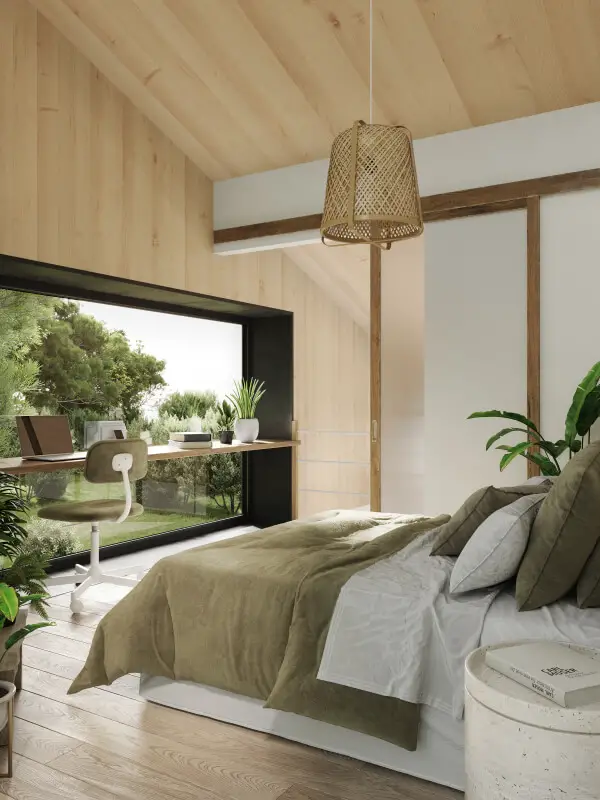
On the 2nd floor, there is a small hallway, a bedroom, and 217 feet of living space.
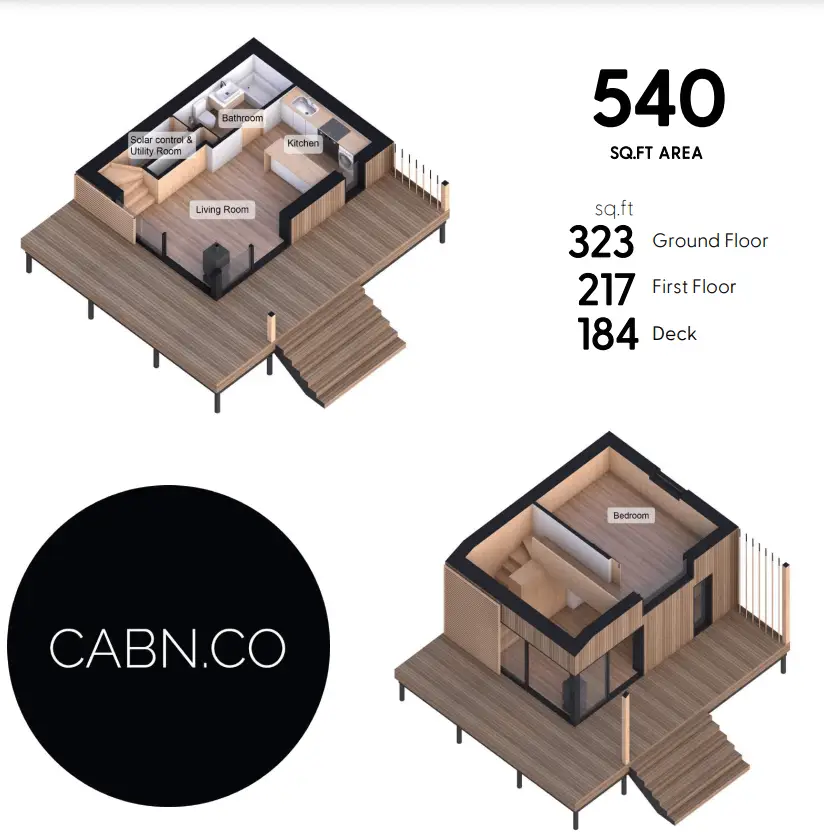
We love the deck and how the deck area surrounds the entire house. This would be great for outdoor living.
Son-der – 2 Bedroom Model (752 Square Feet)
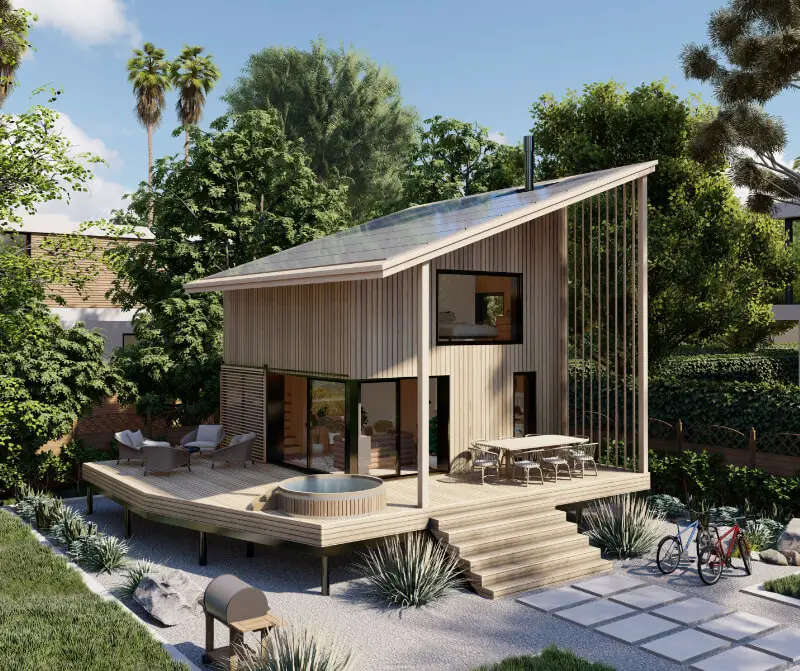
The Son-der is their larger model, with 752 square feet of living space and a 184-foot deck.
The first floor is 462 square feet, more significant than the one-bedroom model. It has a kitchen, living room, bathroom, and utility area. A staircase will take you up to the 2nd floor, where there are two bedrooms, with a total area of 290 square feet.
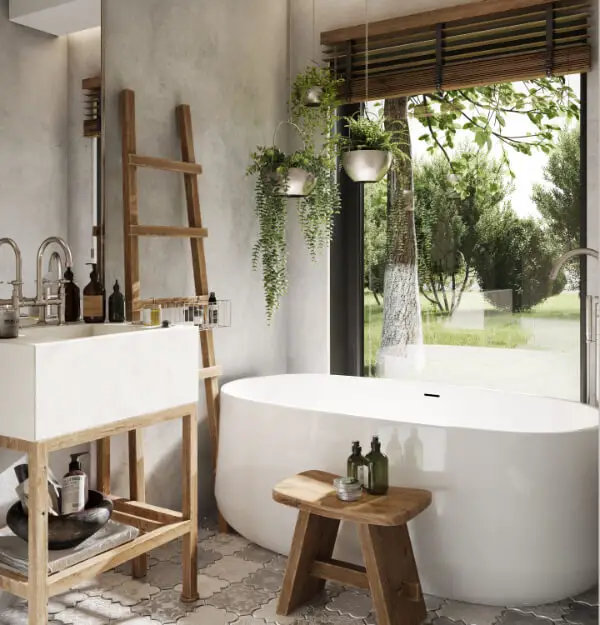
We also love a large deck in the outside area, so you could spend a considerable time outside during the warmer weather months or if you live in a warm climate.
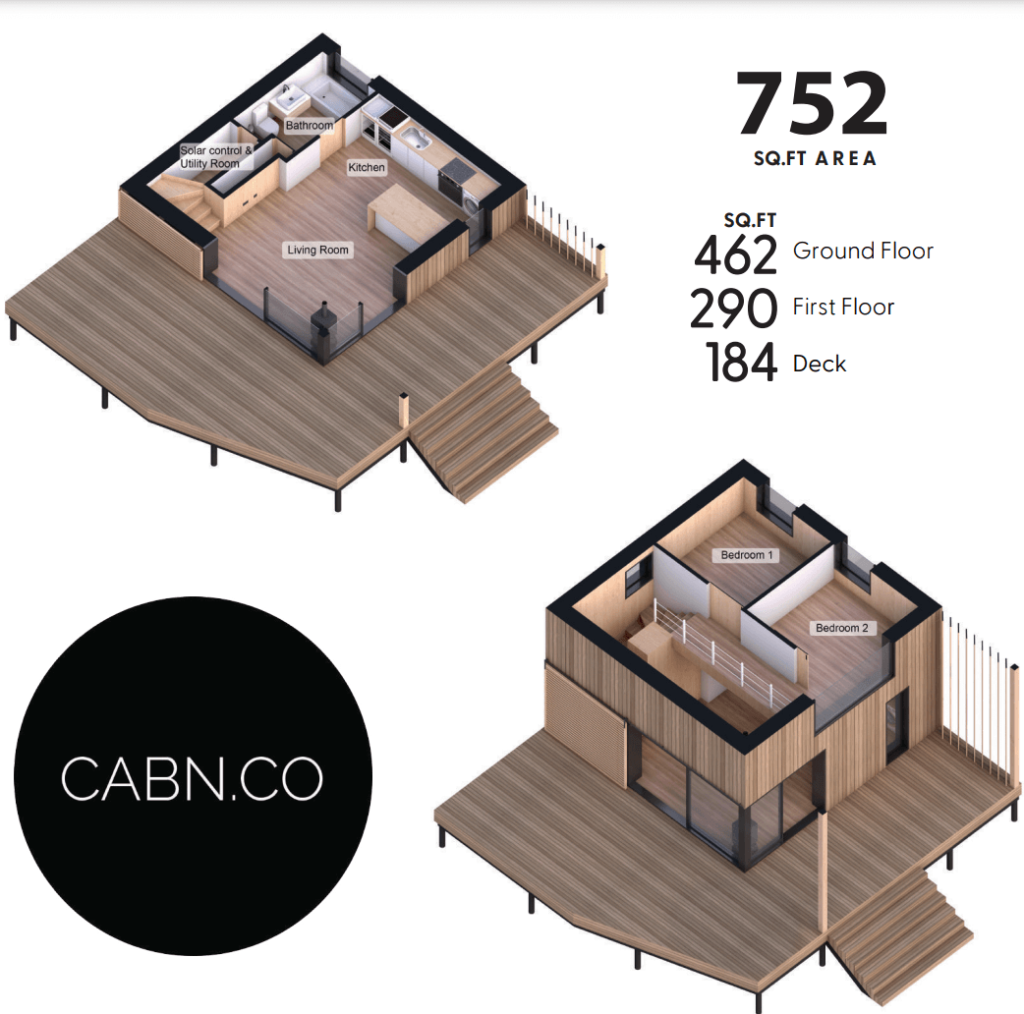
We love the look and design of the Cabn.co homes. This is a company that we will keep an eye on and watch to see what they continue to do. We love and appreciate their net zero homes and that their homes can be made off the grid.
To find out more about Cabn.co homes, you can visit their website by clicking here.
Frequently Asked Questions
What is a net-zero home?
A net-zero home, also known as a zero-energy home, is a residential building designed to produce as much energy as it consumes over the course of a year. It typically incorporates energy-efficient features and renewable energy systems to achieve this balance.
How does a net-zero home achieve its energy balance?
Net-zero homes achieve energy balance by employing various energy-efficient strategies such as high levels of insulation, advanced windows, efficient heating and cooling systems, energy-efficient appliances, and utilizing renewable energy sources like solar panels.
What are the benefits of owning a net-zero home?
Some benefits of owning a net-zero home include significantly reduced energy bills, a smaller carbon footprint, improved indoor air quality, increased comfort due to better insulation, and potential eligibility for incentives or grants for renewable energy installations.
Are net-zero homes more expensive to build than traditional homes?
Net-zero homes may have higher upfront costs due to the incorporation of energy-efficient features and renewable energy systems. However, over time, the savings on energy bills can offset the initial investment.
Can existing homes be retrofitted to become net-zero homes?
Yes, it is possible to retrofit existing homes to become net-zero homes. This typically involves adding insulation, upgrading windows, installing energy-efficient systems, and integrating renewable energy sources.
How do net-zero homes contribute to sustainability?
Net-zero homes contribute to sustainability by reducing reliance on non-renewable energy sources, minimizing greenhouse gas emissions, conserving natural resources, and promoting energy independence.
Can net-zero homes be connected to the grid?
Yes, net-zero homes can be connected to the grid. They can export excess energy generated by renewable systems back to the grid when producing more than needed and import energy when the demand exceeds production.
Are there different levels of net-zero homes?
Yes, there are different levels of net-zero homes based on their energy performance. Some homes achieve net-zero energy balance through on-site renewable energy generation, while others offset energy usage through off-site renewable energy purchases.
Related Questions
Who Should Pay Property Tax, Tenant Or Landlord?
A landlord has a legal burden to pay the property tax and not the tenant. Most landlords will include the property tax cost within the rental amount they are charging. There are also several other things that tenants should not have to pay for. The property taxes are assessed upon the property’s value, so if the property value goes up, your rental cost may also go up to reflect the increased property tax.
By clicking here, you can read more about Who Should Pay Property Tax, Tenant Or Landlord?
3 Types Of Real Estate Ownership Explained
They’re three types of ownership for a property. One is that one individual owner owns the property. The other is that a property is co-owned by several or two individuals. Usually, married couples are considered co-owners of the property. The third way is the property is in a trust, and the trust on the property is managed through the trustee; the trustee would still have significant control over the property.
By clicking here, you can read more about 3 Types Of Real Estate Ownership Explained
